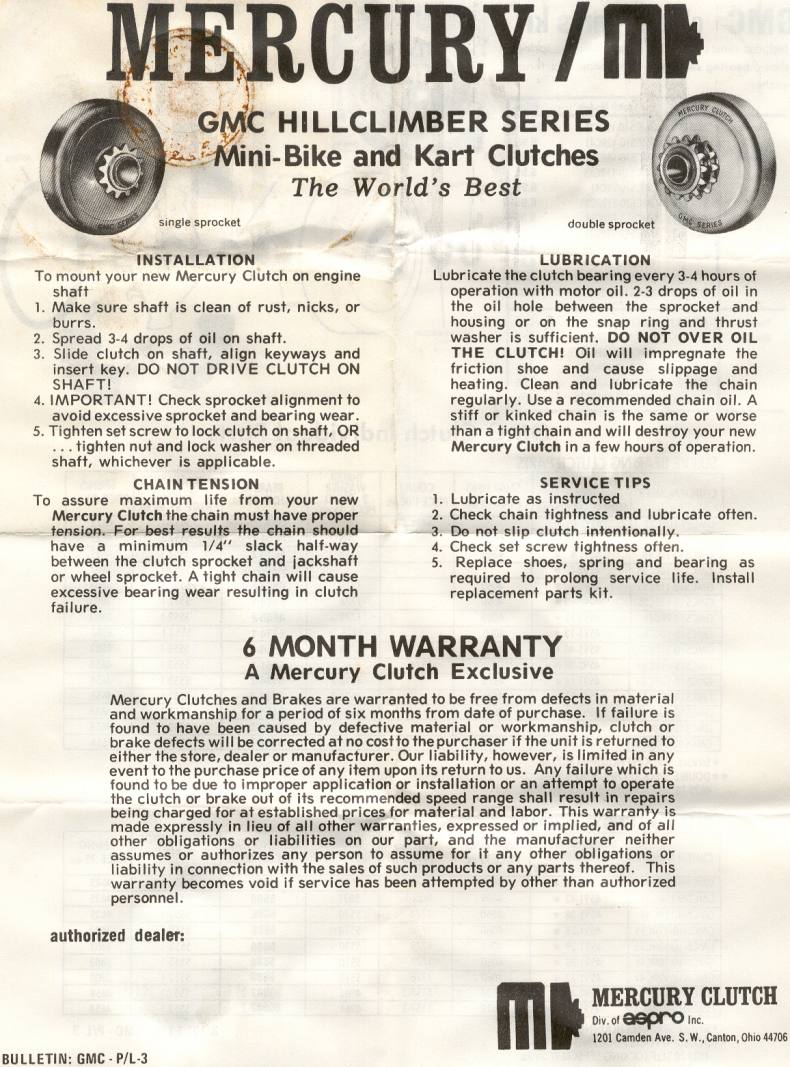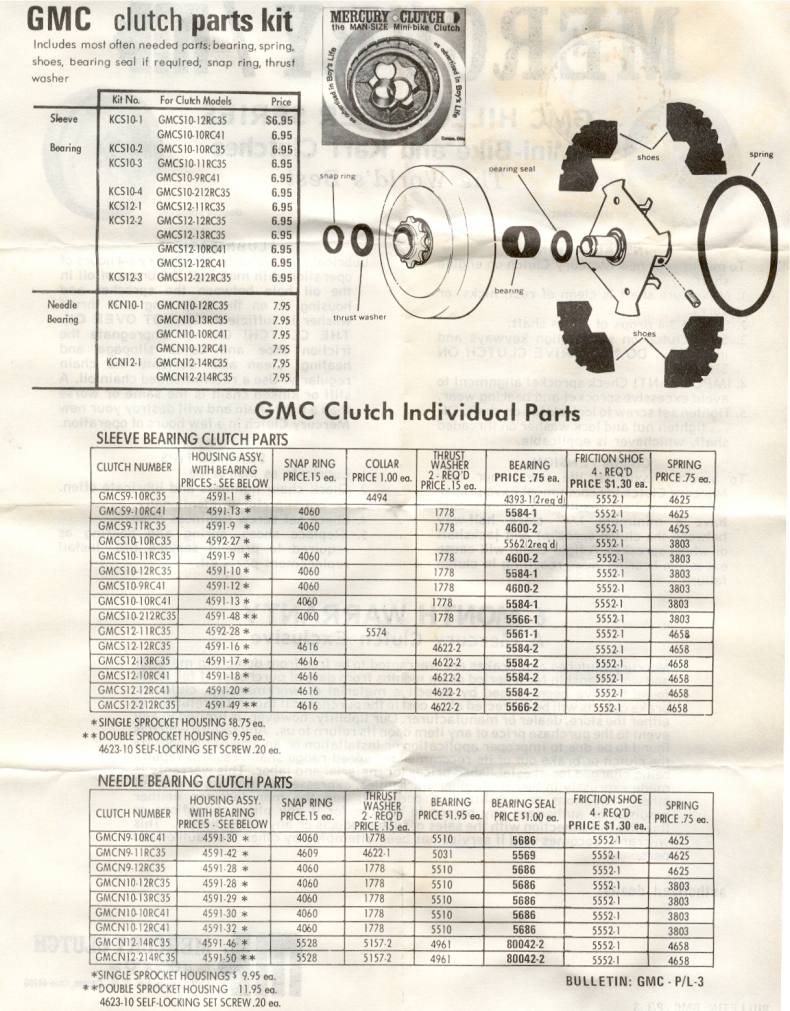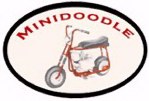
GEAR RATIO
TIP #18
For a lot of us restoring a vintage mini bike, we sometimes are missing a few things. Like sprocket and clutch. I have made an example sketch of a simple gear ratio and how to calculate the ratio. I have also given some additional dimensions for the wheel and sprocket to give you also an example the size relationship. Too big of a rear sprocket will give you less ground clearance. So be aware of this. Another rule of thumb. The larger the ratio (6:1,8:1, etc.) the more torque you will have, but less speed. This is very good if you are a big person or climbing very steep terrain. The smaller the gear ratio, less torque but higher speed. This is good for level ground. Again, engine size also plays a big roll. If you use a small gas engine 2 1/2-3 1/2 hp, larger gear ratio will be necessary. Larger engines, 4-8 hp smaller gear ratios will be OK. And one last factor is wheel size. If you have small wheels and a small engine, you will most likely need a jack shaft to be able to use multiple gear ratios in order to put a small enough sprocket on the rear wheel so you have more clearance from the ground.
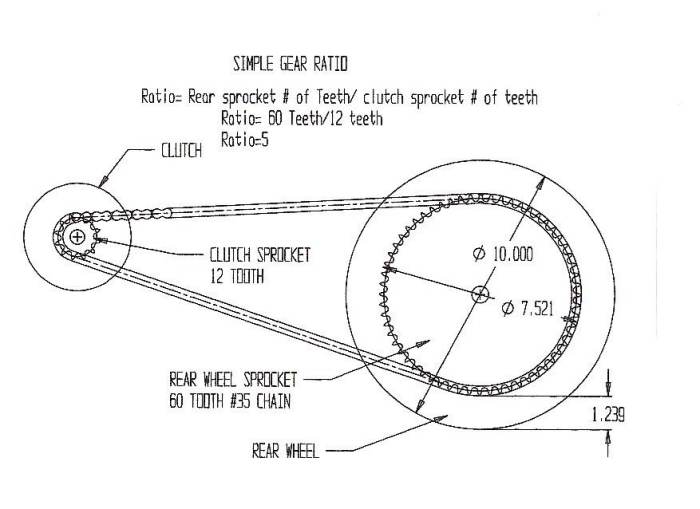
Below is a very good reference for gear ratios for using a torque converters using different size engines.
A Torque Converter system consists of 4 basic components:
1: DRIVE CLUTCH, 2: DRIVEN CLUTCH, 3: JACKSHAFT KIT , and 4: DRIVE BELT.
Scroll down the page to see all 4 of these components:
|
You can use a 20 Series Torque Converter System on 4 cycle engines from 3hp to 8 hp with an RPM range of 1200 rpm to 3100 rpm, which is normal for most 3hp to 8hp engines. A 20 series Torque converter clutch system is used to climb hills, go over rough terrain, and for extra rugged use on go karts, minibikes, and ATVs. The model 20 series uses a 3/4" top width symmetric belt, and the driven clutch is mounted with the spring side inboard.
|
|
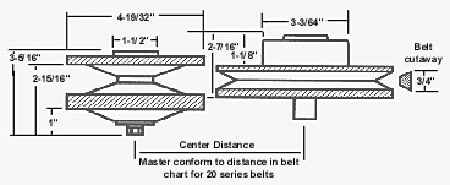 |
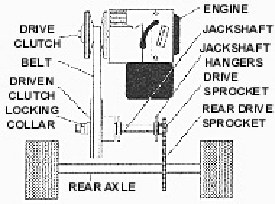 |
GEAR RATIOS:
|
The proper sprocket ratios are important for the proper function of the clutch. Engagement should always be achieved by a smooth advancement of the throttle, and never an erratic movement. For help selecting a good clutch to rear wheel ratio arrangement, use the suggestions given in the chart below. Ratios do vary with wheel size, weight & other conditions, however you should keep your gear ratio at approx 6 to 1. Any ratio either smaller or larger will put too much torque through the clutch and cause it to slip, which will cause the clutch to overheat and the clutch will no longer function. REMEMBER: The larger the rear sprocket is, the more low-end torque you will produce, but the top speed will be decreased, and the smaller the rear sprocket is, the faster the top speed will be, but it will take longer to get there because the low-end torque (power) is reduced.
|
Engine HP
|
Number of teeth on clutch
|
Number of teeth on rear sprocket
|
3 1/2 HP to 6 HP
|
10
|
60
|
3 1/2 HP to 6 HP
|
11
|
60
|
3 1/2 HP to 6 HP
|
12
|
72
|
8 HP to 10 HP
|
10
|
60
|
8 HP to 10 HP
|
12
|
72
|
